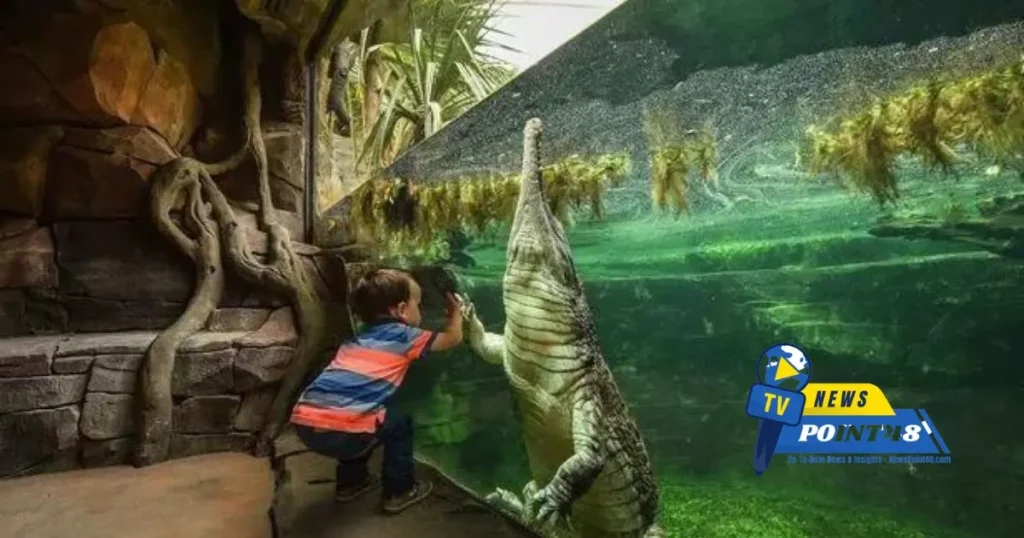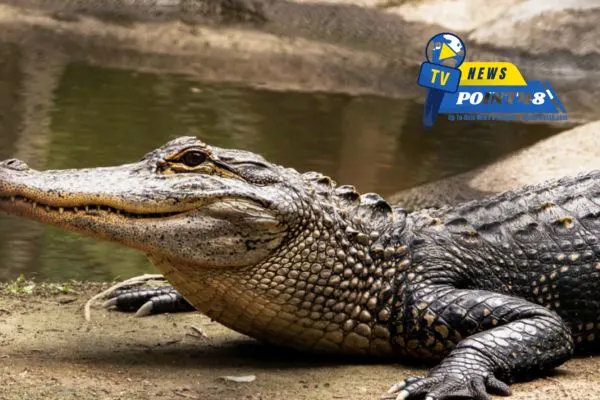In nature’s jolt, a once-admired antagonist has latterly emerged as the saving grace in the ecological as well as the communal reconstruction. In every trophic level in every ecosystem, predation acts as an effort towards equilibrium, but this species in particular has shown how the apex assailants of the environment can morph to protect and be a lifeline to the burdened society. This dangerous animal’s comeback has changed not just the fauna for the better but has also managed to turn the economy and ecologyof the region for the better.

The Return of the Top Predator
There are, however, other apex tourists worldwide including wolves, great white sharks, and big cats, which have been seen as adversaries. They competed with human activities like hunting, fishing, crop planting, and cattle rearing for their food, and as a consequence became targets of persecution or were driven out. But as it happened, in the last couple of decades, wildlife scientists realized the significance of apex predators in protecting the ecological integrity of ecosystems. For example, thriving prey populations might, after some time, cause overgrazing of grasslands causing habitat degradation and loss of biological diversity.
In this community, the gray wolf is that particular predator who is being discussed. Once deemed such as on the verge of extinction, gray wolves were brought back into the area as part of restoration measures. What followed was nothing less than an extraordinary change for not only the environment but also its inhabitants. Predators Restoration of Ecological Systems in Which Predators are to Be Reintroduced In the early 2000s, the notorious gray wolf was once more brought to the geographical area.
At first, the residents were apprehensive, fearing that there might be livestock losses or that people and wolves would clash with each other. However, as the wolves gradually resumed their place in the ecosystem, society began to notice some unanticipated positive effects.
Building upon the multi-scale ecological monitoring in the realm of wolf recovery, the changing paradigm about handling and conserving animals holds maturity. Natural Order where the equilibrium is disturbed would be one of the basic falls under natural biological impact. It was the most voracious of herbivores — elk, deer, and so on — which were chiefly responsible for such drastic changes. Before such an event as the return of wolves, the number of such animals as herbivores mainly made up of elks and deer had surged dramatically. Without such large predators, these animal species have chosen to graze close to water courses. Their grazing led to soil erosion deforestation and eradication of vegetation, which caused loss of biodiversity.
The number of deer and elk was brought under control with the return of the wolves. This made it possible for vegetation to recover, especially along the banks of rivers and streams. The return of these native zones led to the return of the settlement system traditions of the native fish and was beneficial to the flourishing of other wild animals like beavers and flying creatures. The whole nature, which was unsound, started to improve in a healthy and balanced condition.
Economic and Social Benefits for the Community

The reestablishment of grey wolves resulted in not only the improvement of the local environment but also more so the surprising economic benefits the community had not anticipated. Wolves, which were earlier regarded as a menace have now become reliable contributors to the region’s eco-tourism industry. Tourists, who have grown to love these animals and seek their natural habitat, have enhanced the economy of the region through special attention dedicated to viewing these animals.
Businesses involving tourism like wildlife tours, lodges, and restaurants are very busy. The area that depended heavily on its people’s and communities’, practices that have survived from the ancestors, society has transitioned to a growth built on nature-based tourism. This change has allowed the region to broaden its economy and decrease reliance on activities like logging and farming that caused degradation of the environment in the past.
Additionally, the beneficial changes in the environment have also prompted changes in land use. Thanks to clean water and the presence of trees, agricultural and animal husbandry activities have been able to adopt best practices that increase productivity and reduce human-wildlife conflicts. Even the prairie wolves have bribed landowners virtually with polishing programs investing money towards the conservation and protection of wildlife.
The Role of Keystone Species
In the case of the gray wolf, it is a keystone species – in other words, it has a greater effect on the structure and aspects of the surroundings than the number of such organisms. The role of keystone predator species like wolves is to help maintain ecosystems by preventing the explosion of herbivores that would otherwise destroy vegetation. The weakening of the structure of the ecosystem over such a species may lead to the implosion of the ecosystem including various locations that have eliminated their higher-level predators.
This phenomenon whereby one predator at the apex of the food web affects other animals, and plants as well as the predators themselves, due to the absence or presence of one or few predators at the top of the food chain has been observed in different ecosystems over the years. For instance, in the case of Yellowstone National Park, after wolves were reintroduced, the region experienced similar changes in ecology including the recovery of streamside vegetation.
In this particular case, the influence of wolves went well beyond mere control measures over herbivore populations. Their presence contributed to the equilibrium that permitted the proliferation of plant species, which in turn attracted numerous other forms of life. From the smallest birds in the trees to hungry beavers in the water, the entire web benefited because of the wolves as the controller of that food web.
Challenges and Future Prospects

Although the restoration of wolves in the community has been accompanied by several benefits, it has also brought a mix of problems. Some ranchers and farmers still raise the issue of livestock predation, even with the implementation of compensation schemes and non-lethal measures to resolve conflicts. The conservationists have embraced an inclusive approach involving the local communities to ensure that the return of wolves is beneficial to all.
Equally, there is also the measure of a dangerous wolfpopulation that remains averagely active. Usually, this will require the satisfactory control of the population by management, for now with factors such as disease, poaching, and habitat loss, any of these factors may contribute to it being too many or too few. Existing patterns of wildlife conservation will not easily ensure equilibrium between wolves and their environment therefore continuous measures will be needed.
Lessons for Other Regions
The astonishing account that a terrifying beast came to the rescue of an envisaged community should form a case study for any region that is contemplating rewilding or conservation strategies. It shows that protecting animals is not the sole objective of conservation – it is geared towards healing environments and consequently improving the lives of individuals utilizing those environments.
Teaching communities their understanding of the function of apex predators and their ecological constraints helps them live in this world compatible with each other. This is touching because it tells us that rather than seeing such dangerous animals as hindrances in the efforts to conserve our dwindling ecosystems, they can be our best resources.
There has been a new lease of life to this community, following the re-introduction of the gray wolf, which means, in general, efforts in conservation may bear positive benefits. The wolves have not only protected the environment that has been destroyed but brought back local business as well through the equilibrium of the habitat. This is an excellent case of how the help of nature rather than against it leads to wonderful advantages for both humans and animals in distinctive situations.
